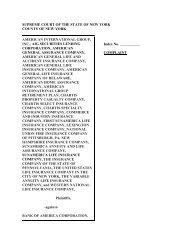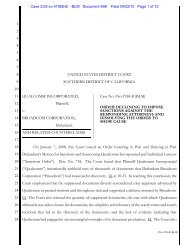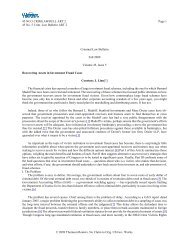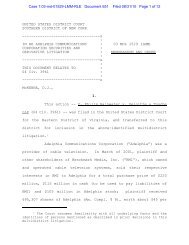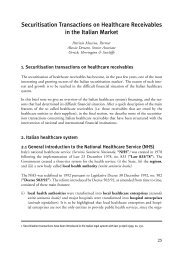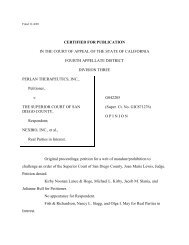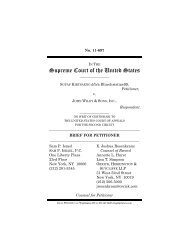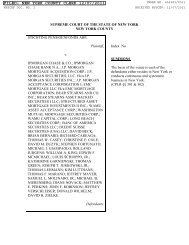Public Charter Schools Borrowing With Tax-Exempt Bonds, Second ...
Public Charter Schools Borrowing With Tax-Exempt Bonds, Second ...
Public Charter Schools Borrowing With Tax-Exempt Bonds, Second ...
You also want an ePaper? Increase the reach of your titles
YUMPU automatically turns print PDFs into web optimized ePapers that Google loves.
chapter six<br />
Credit Considerations<br />
Investors who will buy the public charter school’s bonds must first analyze the<br />
transaction to determine if they are interested, and if so, how much interest earnings<br />
on the bonds is necessary to induce them to invest. This analysis focuses on a number<br />
of characteristics of the school, including its authorizing statutory scheme (length<br />
of charter and process for revocation), organizational structure, program and market<br />
position, management team and operating history. In addition, the terms of the<br />
contractual arrangement between the school and its bondholders form a key part of<br />
the analysis. Generally, a public charter school is viewed as more creditworthy the<br />
higher it ranks in light of these various characteristics, and a transaction is viewed as<br />
more secure the greater protections bondholders enjoy under the terms of the bond<br />
documents. Together, these transaction characteristics (or credit considerations)<br />
influence the cost of capital (or interest rates) associated with the tax-exempt bonds.<br />
Investors rely on a variety of sources of information in assessing the public<br />
charter school’s creditworthiness or risk profile and in making their investment<br />
decisions. These may include, (a) the school’s financial statements and operating<br />
information (including asset values and unusual positive or projected cashflows),<br />
(b) academic research and press coverage regarding the school, (c) information<br />
regarding the chartering authority, its legal framework and relationship with the<br />
school, (d) assessments and evaluations by the chartering authority, if any,<br />
(e) physical inspection of the school site and operations, (f) the school’s primary<br />
market disclosure, and (g) the analyses of third-party credit rating agencies, if<br />
applicable. Most of this information is already in existence when a public charter<br />
school begins the process of a bond financing, with the exception of the primary<br />
market disclosure (or “official statement”) and the credit rating. At the time<br />
a transaction is commenced, counsel will work closely with the school to prepare<br />
<strong>Public</strong> <strong>Charter</strong> <strong>Schools</strong> <strong>Borrowing</strong> <strong>With</strong> <strong>Tax</strong>-<strong>Exempt</strong> <strong>Bonds</strong>, <strong>Second</strong> Edition 25



